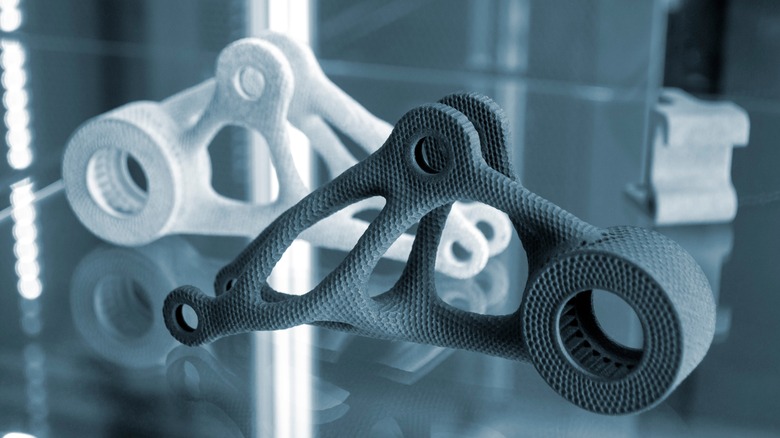Why 3D Printers Are So Important For Future Space Exploration
Netflix's 2018 reimagining of the sci-fi classic "Lost in Space" brought a lot of interesting ideas to the forefront — not the least of which was a more serious and character-driven story. What may come as a bit of a surprise is just how realistic the show's blink-and-you'll-miss-it depiction of interstellar travelers' use of 3D printers may have turned out to be.
It's unlikely that near-future real world space missions will involve life and death struggles on distant planets with aliens, robots, or alien robots, and thus probably won't see astronauts 3D printing firearms or other defensive (or offensive) implements. However, the application for using 3D printers to produce tools and various component parts is exceedingly plausible — particularly for long-term missions that would send explorers and scientists too far out from Earth's range to make regular resupplying practical.
NASA has been experimenting with 3D printing technology as it could pertain to space travel for several years, and with a little help from the International Space Station (ISS) and partner Made in Space, it's been able to test the reliability of the process in microgravity conditions since 2014. The results have been promising, but it's a bit more complicated than simply sending a ship off into space with something like an Anycubic Photon M3 tucked away with the rest of the cargo.
It all comes down to weight
Weight is one of the most critical aspects to space travel as it can have a significant impact on the amount of fuel and thrust needed to get a rocket out of the upper atmosphere. But it's not even that simple as more fuel also adds to the overall weight, and other considerations such as food, replacement parts, objects that may be needed for experimentation, and other supplies need to be budgeted for as well.
The expectation for 3D printers is that they would ultimately reduce the amount of weight being taken up by items like component parts and some tools. For example, instead of bringing multiple replacement parts in case something were to need fixing (which could result in several items that end up not being used, but still take up a fair bit of weight), batches of 3D printing materials can be brought along and used to print out exactly what's needed in a given situation.
Additionally, something like a Refabricator could be brought along to recycle unused, broken, or replaced 3D printed materials for use in future prints (per NASA). This would theoretically cut back on the amount of raw printing materials needed — thus cutting back on weight usage as well — and has been in testing on the ISS since 2019. Once the printing and recycling technology is refined, it could make long-distance space missions taking place over years (instead of weeks or months) much more feasible.

